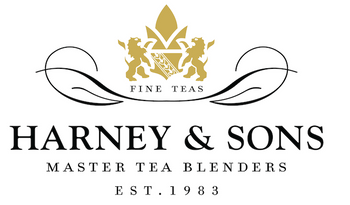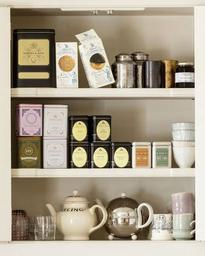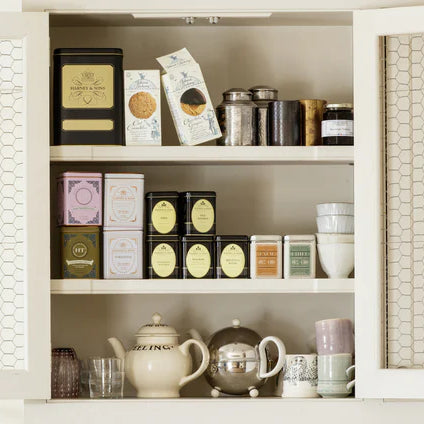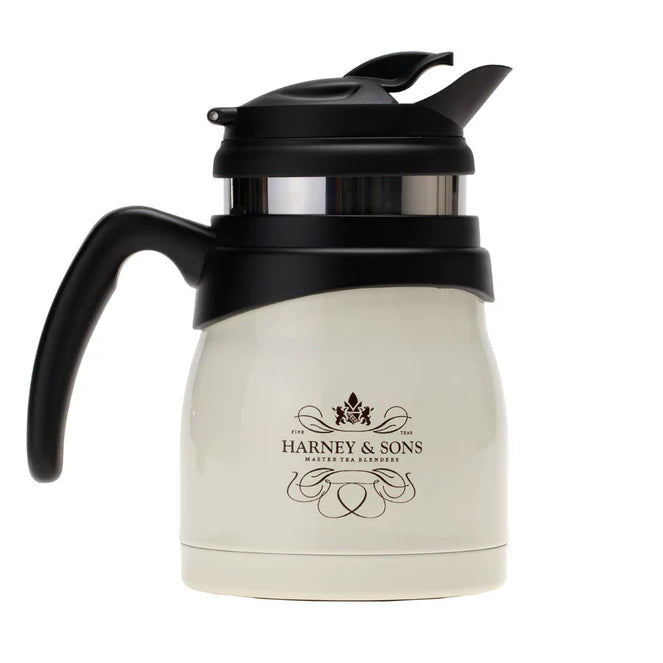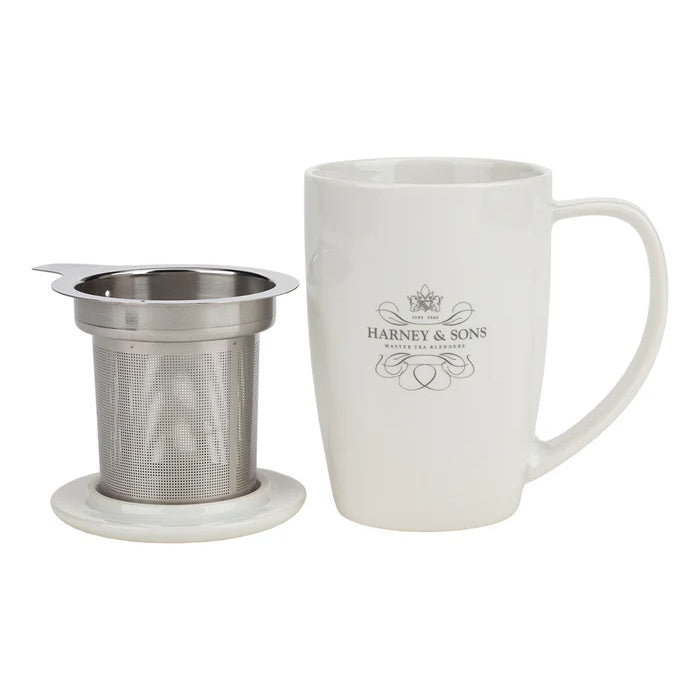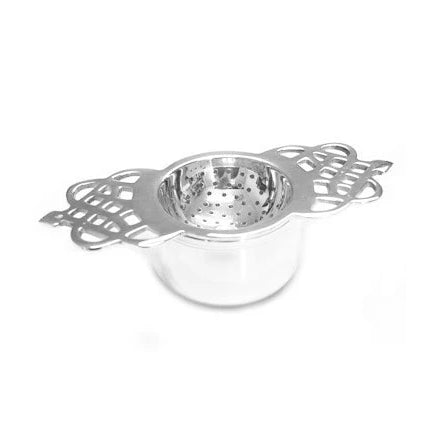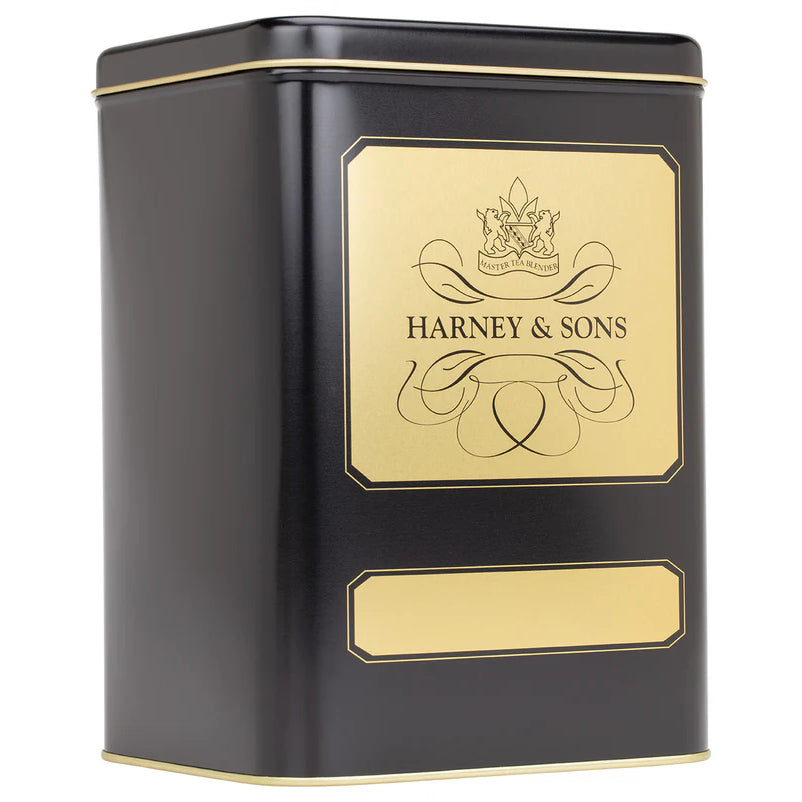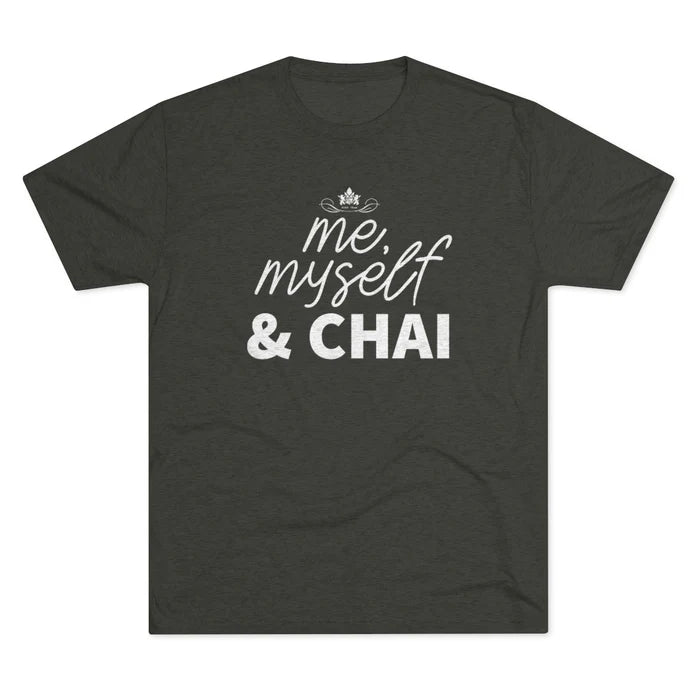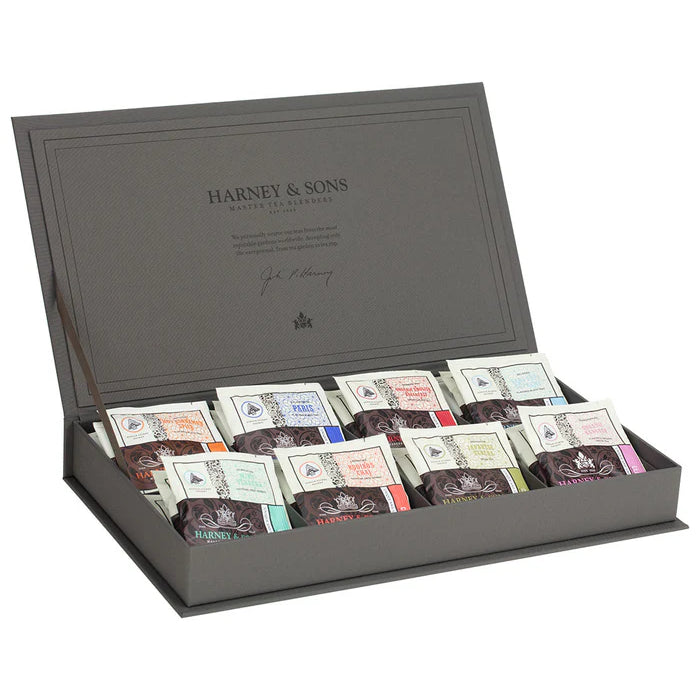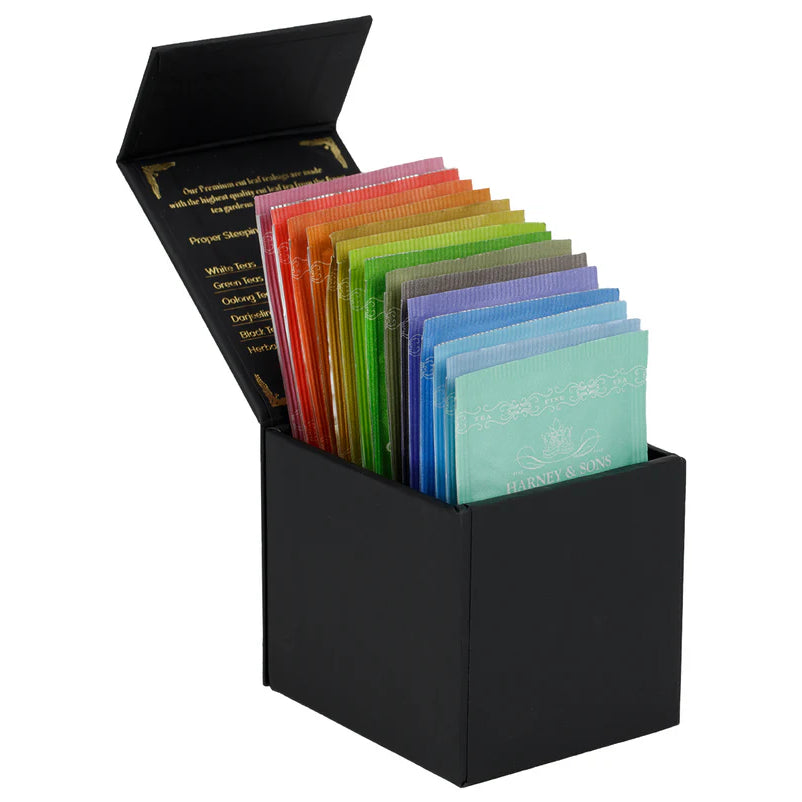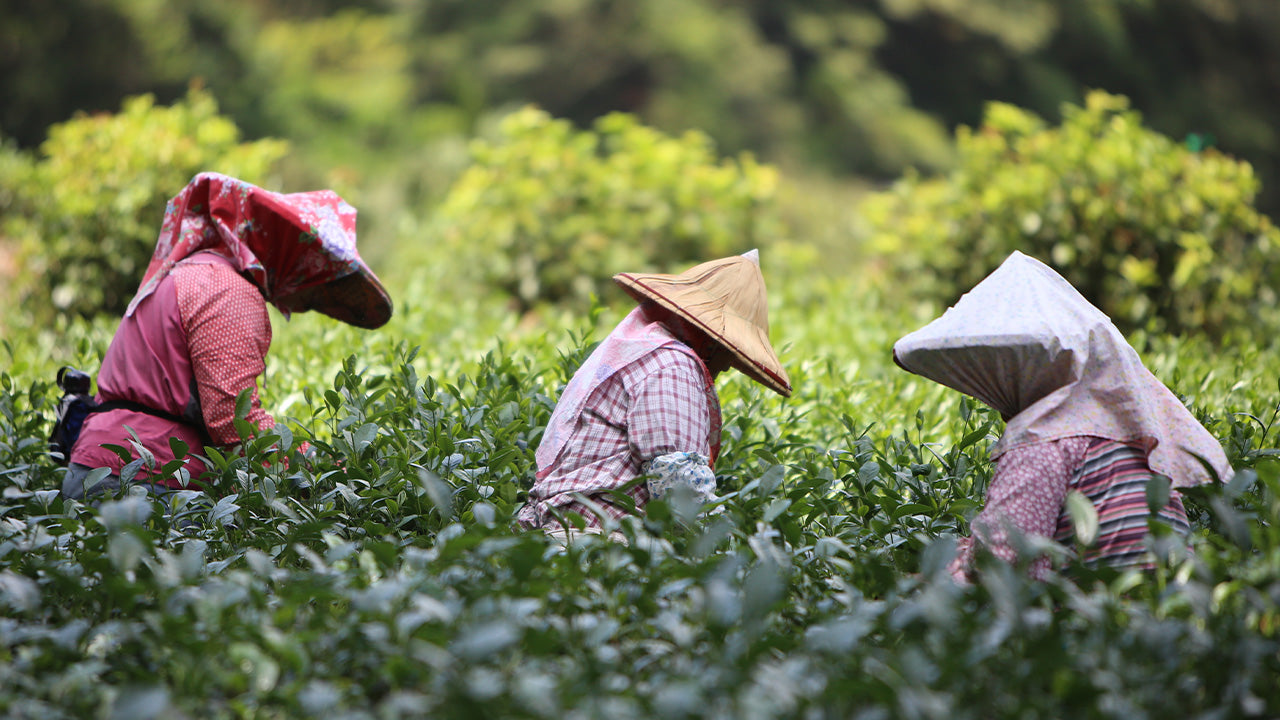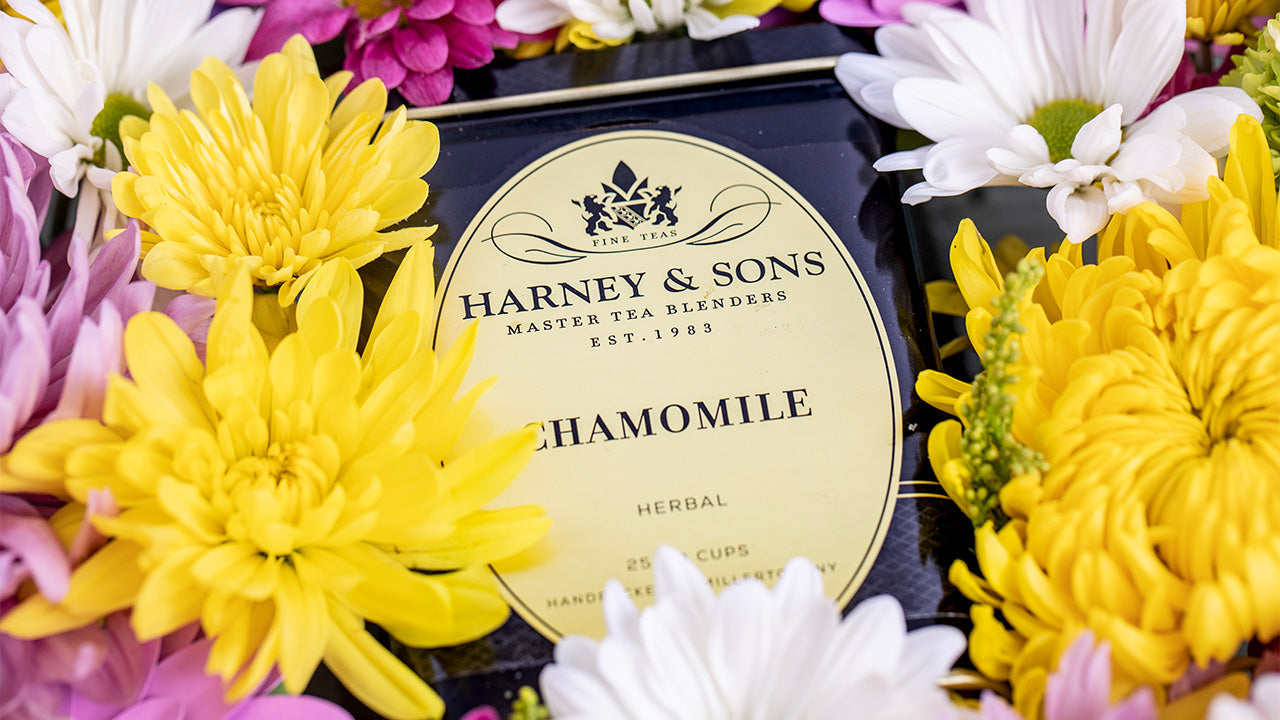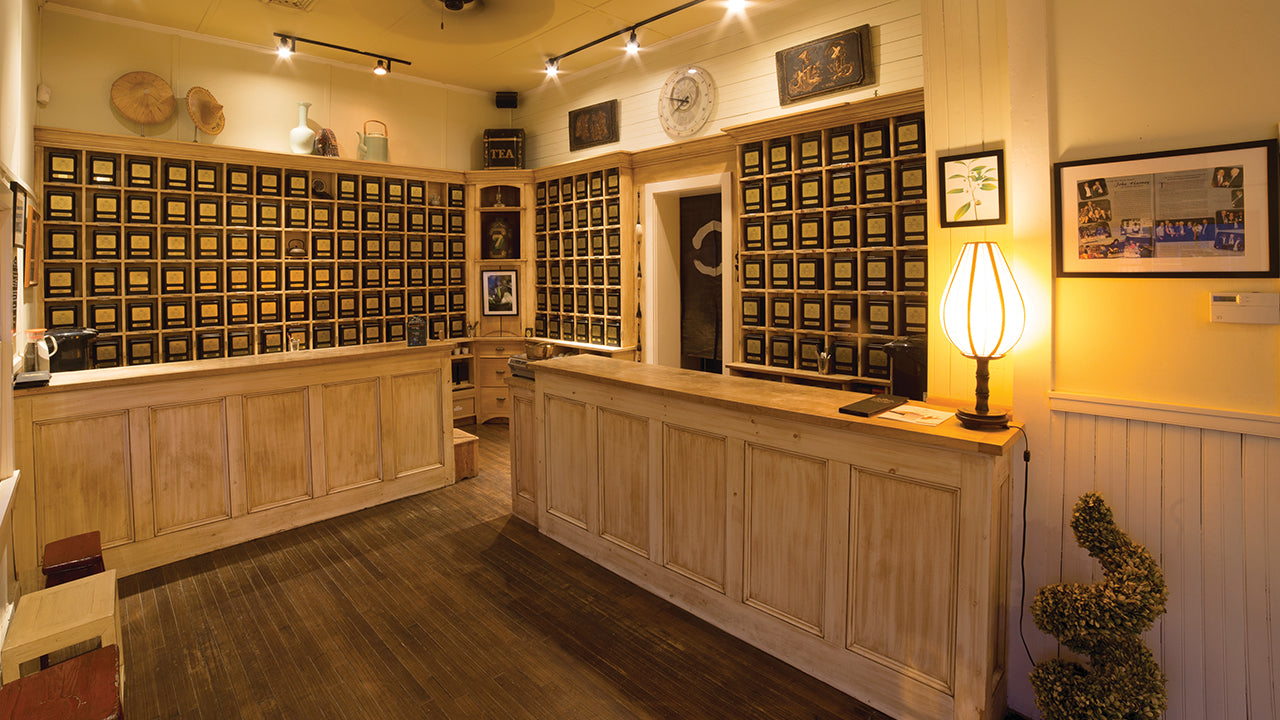Have you ever wondered where exactly Harney & Sons tea comes from? The simple answer is… nearly every corner of the world. But where’s the fun in stopping there? Let’s take a journey through the tea regions, which span seven countries and three continents, that help make Harney’s blends so distinct and unique.

Japan
For over 35 years, we have been importing teas directly from Japan. Our family has spent decades building long, personal relationships with the best tea growers in the industry. My dad, our tea buyer Elvira, and I travel to various parts of Japan in search of the best teas the region has to offer. Spoiler alert: it’s more than you can imagine!
Tea is produced almost everywhere in Southern Japan, but there are five major tea regions across the country: Kagoshima, Mie, Shizuoka, Uji, and Wazuka. On my dad’s first trip to Japan about 20 years ago, a wise tea man said: Kagoshima is the earliest, Shizuoka makes the most, and Uji makes the best tasting. That man was from Uji, but it still holds true(mostly!)
Around 40% of Japan’s tea plantations can be found in Shizuoka, thanks to its mountainous terrain, mild climate, and abundant rainfall. Believe it or not, this creates ideal conditions for tea cultivation. Because of that, Shizuoka is one of Japan’s most famous tea-producing provinces, renowned for its high-quality green tea.
- Japanese Sencha – A pleasant and approachable green tea. A fine choice for every day, in the way my grandfather, John Harney, always began his mornings with a cup.
- Japanese Whisky – A rare black tea that comes from Shizuoka Prefecture. During its extensive processing, it is finished with an 8-hour smoking over wood chips made from Japanese whisky barrels.
- Tokyo – A Harney Family favorite, this blend is inspired by the impeccable desserts offered in Japan’s stunning capital city. This delightful green tea is combined with savory flavors of toasted sesame seeds and a swirl of sweet caramel.
- Ichiban Sencha – Sourced from the Otsuka family, who has been making tea in the coastal region of Kakegawa for almost 150 years. This Ichiban is their pride and has the punch you need to get through a long day.
- Sencha Scent of the Mountains – Another hit from the Otsuka family! This blend originates from Kawane, the highest tea region within the Shizuoka province. The cooler air contributes to the delightful aroma and light vegetal taste.
- Mist of Kawane – The elevation from the Japanese Alps makes all the difference! Another light, yet caffeinated, green tea option.
- Bancha – Known as a summertime green tea, this blend is notable for its grassy flavor and lack of smokiness. A great choice for a light and enriching, traditional green tea!
 Kagoshima is Japan’s second-largest producer of unprocessed tea. Located on the southern tip of Japan’s southern Kyushu Island, this region accounts for roughly 30% of the country’s total tea production. The climate is mild, but the active Sakurajima volcano provides the region with mineral-rich, fertile soils that produce some of the best Sencha teas in the world. Many Kagoshima teas are grown pesticide-free or organically, making them popular among health-conscious tea drinkers!
Kagoshima is Japan’s second-largest producer of unprocessed tea. Located on the southern tip of Japan’s southern Kyushu Island, this region accounts for roughly 30% of the country’s total tea production. The climate is mild, but the active Sakurajima volcano provides the region with mineral-rich, fertile soils that produce some of the best Sencha teas in the world. Many Kagoshima teas are grown pesticide-free or organically, making them popular among health-conscious tea drinkers!
- Kagoshima – Spring sprouts earlier in this region, making it an early-season tea. The high levels of amino acids give it a good body for a Sencha. Asatsuyu tea is also included in this blend, which is often called a natural Gyokuro because of its mellow sweetness.
- Kagoshima Yutaka Midori – A mixture of light and deep steamed senchas made from Yutaka Midori cultivar. Yutaka Midori translates to “intensely green,” giving it a great color and even better taste!
- Asanoka Sencha – We were introduced to this lightly steamed, early-season tea on our recent visit with the Otuska family. Made from a unique blend of Yabukita and Pingshui No. 1 cultivars, this shaded Sencha offers a mellow, well-balanced brew with sweet tropical aromas.
For centuries, the Uji province has been the center of tea and ceramics. When Kyoto became the old Imperial capital of Japan, a variety of products were made for the court in the surrounding regions. In turn, they found that the Uji province produces some of the best shade-grown Gyokuro & Matchas available! Why choose a shade-grown green tea over others? The shade increases chlorophyll content, giving the tea leaves a vibrant green color, while also enhancing compounds that add depth and sweetness to the tea!
- Heavenly Gyokuro - Hand-picked from the Ujitawara and Kyotanbe mountains, this is the highest grade of all Japanese green tea varieties.
- Hojicha – One of our most loved green teas, this Japanese specialty contains roasted twigs from some of the best tea gardens in the Uji province. It is reminiscent of coffee, but sweeter and has reduced levels of caffeine in comparison to black tea.
- Ground Hojicha – If you like Matcha, this might be an interesting alternative. Just add one or two scoops into a bowl and whisk it into a foam. Perfect for a latte!
- Matcha Jobetsugi – Matcha powdered green tea has been the pride of the region for several centuries. Our Thin Grade Jobetsugi is great for a daily boost and it pairs well with chocolate, which is always a plus!
- Matcha Senjunomukashi – The Senjunomukashi (Thick Grade) Matcha has been used traditionally in ancient Japanese and modern-day tea ceremonies.
- Matcha Unjonotomo – The award-winning Unjonotomo (Extra Thick Grade) is our super-premium matcha made from shade-grown Tencha leaves. It is thick and sweet, with luxurious vegetal flavors.
Just south of Kyoto lies Wazuka, a small town tucked away in the mountains with over 800 years of tea history. Wazuka grows only 2% of the tea produced in Japan, but it is renowned for some of the highest-quality brews in the nation. Originally, the tea grown in Wazuka was used for medicinal purposes by Zen Buddhist monks, but today teas from this region are known around the world for their distinct flavor.
- Matsuda’s Sencha – On a recent trip to Japan, I visited Matsuda and his family, who have crafted tea behind their home for generations. Using steamers and rollers, they produce a unique Sencha with a distinctive aroma, rich body, and unforgettable flavor.
- Master’s Mark Sencha – A prized Sencha from Wazuka Valley, this exceptional brew is carefully processed and stored to preserve amino acids and antioxidants that give it a delicate sweetness and rich vegetal tones.
- Organic Sencha – A delicious green tea that is the real deal: truly organic and truly a Sencha!
- Wazuka Guricha – Sourced from the Wazuka Valley, this tea is crafted by Wataru-san, a young farmer who preserves umami by skipping the final rolling step. This process results in a refreshing, lighter taste in the first steeping, the second is a bit bolder!
China
As the birthplace of tea, China’s history and impact are unmatched in the tea world. There are five main regions from which we source our tea: Anhui, Fujian, Hunan, Yunnan, and Zhejiang. Due to its size, diverse climate, and varying terrains, each region has unique conditions that play a crucial role in shaping the flavors and characteristics of the teas produced there.

Let’s start in the Anhui Province, located in Eastern China. We were very impressed when we visited the region a few years ago. While it’s not the largest or wealthiest province in China, it is home to the stunning Huangshan mountains and world-renowned tea. The high mountains and misty climate are ideal for slow-growing, flavorful tea leaves ranging from green, black, and yellow.
- Hao Ya ‘B’ – A Keemun black tea from the rolling hills of southeastern Anhui. Harvested after Mao Feng in early May, they are carefully graded and the finest tips become Hao Ya ‘A’, while the next best are Hao Ya ‘B.’
- Hao Ya ‘A’ – Among the finest black teas in the world, this Keemun black tea is made with the finest leaf tips in the region.
- English Breakfast – One of our best sellers, this English Breakfast blend has an ancient pedigree. Sourced from the same region where it became popular in the 1800s, it’s simply China black 100% Keemun.
- Royal Chrysanthemum – A deliciously sweet herbal tea made from big yellow chrysanthemum flowers.
- Songluo Broken – Discovered at the World Tea Expo, this tea comes from the Songluo Mountain near Keemun. It's rich in flavor but with a slower, controlled oxidation for depth.
 Another popular region we love to visit and source from is Fujian. This coastal province is located in Southeast China and is best known for its exotic white teas, divine jasmine teas, earthly oolongs, and flavorful black teas. With a hilly terrain, Fujian is said to be “eight parts mountain, one part water, and one part farmland.” Tea plants thrive in this type of subtropical climate and the tea farmers have used that to their advantage, developing a diverse variety of teas. My dad took his first trip to the Fujian province in 1996 and hasn’t looked back since!
Another popular region we love to visit and source from is Fujian. This coastal province is located in Southeast China and is best known for its exotic white teas, divine jasmine teas, earthly oolongs, and flavorful black teas. With a hilly terrain, Fujian is said to be “eight parts mountain, one part water, and one part farmland.” Tea plants thrive in this type of subtropical climate and the tea farmers have used that to their advantage, developing a diverse variety of teas. My dad took his first trip to the Fujian province in 1996 and hasn’t looked back since!
- King of Bai Mudan – A very special, sweet, and full-bodied white tea selected by my dad on a trip to Fuding, China.
- Dragon Pearl Jasmine – A Harney family favorite, this blend consists of little hand-rolled ‘pearls’ gently infused with jasmine flowers.
- Black Jasmine – Back by popular demand, this is our black tea version of a favorite floral tea. This blend is difficult to find, so get it while you can.
- Wuji Da Hong Pao – Sourced from the Wuyi Mountains, this wonderful, warm, and rich oolong tea is another Harney family favorite.
- Golden Monkey – A black tea from the northern Fujian province, this blend features large black leaves interspersed with golden tips giving it a light, sweet complex. You’ll also enjoy hints of apricot, nuts, and rose.
- Golden Eyebrow – Another version of Wuyishan’s best black tea, Jin Jun Mei is Chinese for Golden Eyebrow. This new blend was discovered on a recent trip to Fujian in 2024.
- Fujian Black – From the southern Fujian province, this black tea has an intense flavor, edging toward vanilla.
- Osmanthus Oolong – A traditional oolong with dark notes of fruit and hints of flowers throughout. This smooth and elegant blend is the perfect choice for a sophisticated afternoon tea.
- Mutan White – One of our most loved teas, this very special blend is light and sweet with vegetal flavors!
 Roughly 500 miles west of the Fujian province, you’ll find another favorite region of Harney & Sons. We’ve been visiting the Hunan province for over 20 years. Our good friend in tea, Steve He, calls Hunan the Hometown of Tea. The name “Hunan” means “south of the lake”, referring to Dongting Lake, the second-largest freshwater lake in the country. The region is a popular tourist destination due in large part to the stunning scenery, including Zhangjiajie National Forest Park, Mt. Hengshan, many ancient buildings, and historic remains.
Roughly 500 miles west of the Fujian province, you’ll find another favorite region of Harney & Sons. We’ve been visiting the Hunan province for over 20 years. Our good friend in tea, Steve He, calls Hunan the Hometown of Tea. The name “Hunan” means “south of the lake”, referring to Dongting Lake, the second-largest freshwater lake in the country. The region is a popular tourist destination due in large part to the stunning scenery, including Zhangjiajie National Forest Park, Mt. Hengshan, many ancient buildings, and historic remains.
- BaoMu Gold – A sweet black tea from the Wang family tea garden! A sister tea to BaoMu Wild.
- BaoMu Wild – Sourced from wild plants in the mountains of Hunan, this tea is lighter in flavor than the BaoMu Gold.
- Green Gulou – In 2019, we became the first Western tea buyers to visit Gulou, a hidden valley in Hunan. That’s where we met Mrs. Xiao, who blew us away with her Green Gulou blend, which is full-bodied and naturally sweet.
While we have never visited the beautiful southwest region of Yunnan, its reputation speaks for itself – this is the province where tea was first discovered, after all. Yunnan is comprised of diverse environmental regions and is home to over 40 percent of all protected plant species, including ancient tea trees up to 1,700 years old. From the snow-capped mountains of the northwest to the subtropical lowlands of the southeast, this region offers a diverse landscape and an incredible tea selection.
- Pu-Erh – One of our most loved teas, Pu-Erh’s earthy pleasures have a passionate group of followers! This tea is a dark, savory brew.
- 2018 Ripe Pu-Erh – This Pu-Erh blend was made in 2018 using organic methods. It is described as “ripe” as the aging process is accelerated, unlike “raw” pu-erh.
- Lao Ban Zhang Pu-Erh – This 96g pu-erh tea cake comes from Manwei Village, a region famous for its tea. This is smaller than most pu-erh cakes, making it perfect for sampling without a big commitment.
- Yunnan Golden Tips – An earthy yet assertive black tea with a maple sweetness that’s sure to win you over!
- Tippy Yunnan – A balanced blend of sweet and earthy flavors, mixing large black leaves with hints of gold for a smooth, medium-bodied tea.
 We saved the best Chinese tea region for last! Just kidding, we don’t play favorites, but Zhejiang province is one of the largest tea producers in the country. Located in the middle of the east coast of China, this region is known as the Golden Triangle. As with all great tea-growing climates, Zhejiang is primarily subtropical. While experiencing mild fall and winters, this region receives above-average rainfall through the spring and summer months, including impacts from the occasional typhoon. Still, its lush, misty mountains create the ideal conditions for high-quality tea.
We saved the best Chinese tea region for last! Just kidding, we don’t play favorites, but Zhejiang province is one of the largest tea producers in the country. Located in the middle of the east coast of China, this region is known as the Golden Triangle. As with all great tea-growing climates, Zhejiang is primarily subtropical. While experiencing mild fall and winters, this region receives above-average rainfall through the spring and summer months, including impacts from the occasional typhoon. Still, its lush, misty mountains create the ideal conditions for high-quality tea.
- Lung Ching – World-renowned as one of the best Chinese green teas. Our Lung Ching is made by a respected producer two hours beyond the traditional area.
- Meijiawu Lung Ching – Lung Ching is the gold standard of Chinese green tea. With a rich flavor of steamed bok choy and roasted nuts, it comes from one of the original four locations near Hangzhou.
- Jin Shan – A light green tea from a tiny village in Zhejiang. This blend is loaded with silvery tips and delicious flavors of citrus and roasted vegetables.
- Tong Lu Green – This tea is from the mountains of Tong Lu, which we have visited twice! This tea comes from the White Leaf #1 plant, and is a Harney family favorite.
- Anji Baicha – This special cultivar was found in the northern Zhejiang province about 20 years ago. It creates a great combination of flavor, sweetness, and body.
- Organic Gunpowder – A classic green tea offering from China, Gunpowder has a sharp, charred flavor that has become very popular and familiar.
 Taiwan
Taiwan
If Taiwan doesn’t come to mind when you think of tea, it’s understandable but unfortunate. Often overshadowed by its neighbors, China and Japan, Taiwan produces some of the finest oolongs in the world. Taiwan’s tea industry took off during China’s embargo in the 1950s. When the embargo ended, competition forced Taiwan to focus on oolong tea. They’ve spent decades now mastering their production and even influencing Chinese tea makers along the way. As a result, we are able to source some of the freshest, most remarkable oolongs on the market today. We particularly enjoy the Formosa tea region, world-famous for its complex flavors, floral aromas, and smooth textures.
- Ali San Oolong – Tea cultivation in Ali San began only in recent decades, replacing deforested highlands with thriving oolong farms. This transformation led to the creation of high-mountain oolongs with delicate lemony, creamy flavors.
- Formosa Oolong – A style of brown oolong tea that generations of Americans have loved, especially for its toasty flavor. This tastes most similar to the cup of tea you might have at a Chinese restaurant.
- Fanciest Formosa Oolong – One of our most loved teas, this blend is made in Northern Taiwan. What makes this oolong special is it’s twisted, as opposed to the balled style.
- Gaba Oolong – Valued for its rich flavor and calming benefits, Gaba oolongs are high in gamma-aminobutyric acid which promotes relaxation, stress relief, and better sleep.
- Dong Ding Light – An original oolong, produced in the mountains of Taiwan. This is one we have sourced over the years, it’s lightly roasted with pleasant lemon and vegetal flavors.
 India
India
It may come as a surprise, but India is second only to China in the production of tea. There are more than 100,000 tea estates across the country and it’s estimated that 70 percent of the tea produced there is consumed by its own people. It’s fair to say, India is crazy about their tea! In fact, if you visit India you’re likely to see chaiwalas, people who prepare and sell tea from small stands or shops, in city markets, on street corners, and even on the side of the road!

The largest tea-growing region in India, perhaps in the world, is Assam. These teas are derived from the Camellia sinensis assamica, a large-leafed variety of tea grown in wet and humid conditions. Assams are among the most assertive and brisk of black teas, yielding lovely honey and malty flavors.
- Organic Assam – A rich, full-leaf, medium-bodied black tea. Our blend has a slightly lighter liquor with a sweet honey flavor.
- HarSha – A black tea blend Mike developed as a fulfilling breakfast tea. It’s an extraordinary blend of broken tippy Assam to give body and depth and muscatel 2nd flush Darjeeling to add a little dark fruity flavor.
- CTC Assam – An espresso-style tea that’s all the rave in India. This blend has a striking amber color, rich flavor, and full body. It is a key ingredient in several of our blends including East Frisian and Chai.
- Irish Breakfast – 100% Assam, our Irish Breakfast is a sophisticated blend and tastes great on its own or with a splash of milk and sugar. A great tea to start your day.
- Khongea Broken – Another perfect tea to start your morning! This bold, brisk Assam is produced by the Prakash family of DLX Ltd.
- Mokalbari Golden Assam – A rare treat from Assam, comprising nearly 100% folden tips. Produced by the Jalan family, this tea is extremely rare.
It’s no secret we like the finer things in life, which is why we always enjoy sourcing from the Darjeeling region. Nicknamed the “champagne of teas, both because the tea crops vary from year to year like grapes and because to be called a Darjeeling tea, it must be grown, harvested, manufactured, and processed in the tea gardens of Darjeeling. As if the region couldn’t get any more unique, it is one of the highest-altitude tea-growing territories in the world. In the cool air and hardscrabble soil of the Himalayan foothills, the leaves grow slowly, taking on lovely variegated flavors.
- Darjeeling – Known as the “Queen of Teas,” this is a blend of 1st flush and autumnal teas from the best gardens Darjeeling has to offer.
- Dar-Jee-Lingside – Crafted in cahoots with Darlingside and my brother Alex Harney, this blend combines the luxurious taste of Darjeeling tea with wild honeybush and flavors of lemon and grapefruit.
- Thurbo 1st Flush – Made from a garden located high in the Mirik Valley, this black tea is made in the middle of March by the legacy company, Goodricke.
- Tukdah 1st Flush – Sourced from an organic tea estate owned by our friends at Chamong, these tea plants are essentially clones of the Chinese version, making it a tippy, assertive tea.
- Sungma 2nd Flush – A black tea harvested on the eastern side of the Mirik Valley in the early summer of 2024. In the second flush, the growers allow an insect infestation to occur so the plant can react by creating a repellent. This process creates a flavor similar to fruity muscat grapes.
- Singell 2nd Flush – Sourced from the same estate in Mirik Valley, this blend undergoes an identical meticulous process. While Sungma has stronger muscatel and honeyed notes, Singell has a lighter, more floral sweetness to it.
Our final Indian region is Nilgiri, the most scenic of the country. Nilgiri means “blue mountain,” which is fitting as the Western Ghats mountain range runs through the region. The Nilgiris combine beautiful mountains with an abundance of blooming flowers, dedicating 70 percent of the district to tea gardens. The Korakundah estate is a Harney favorite, as we’ve visited several times.
- Chamraj Nilgiri FOP – This blend comes from the Chamraj tea estate, a distinctive visit from Mike’s first trip to Asia in 1996. He always keeps an eye out for tea from their brilliant tea fields.
- Havakai Frost Tea – Grown in the mountains of southern India, Frost Tea develops its concentrated flavor thanks to cold winter nights in the region. Highly withered and lightly oxidized, it’s the first tea produced of the new year, nearly 2 months ahead of other teas in India.
- Organic Korakundah – Korakundah is one of our most visited areas. Alex has been there four times, and my dad twice. This tea is nice and mellow, sourced from the highest area in the Nilgiri tea region.
 Sri Lanka
Sri Lanka
To the southeast of India lies the small, pearl-shaped country of Sri Lanka. Despite its size, this small but mighty country produces a quantity and variety of black teas that rival China. Its unique topography and climate allow for three types of tea, which are differentiated by elevation, called Ceylons. While most tea regions have one peak spring season, Ceylon has two, allowing them to grow tea almost year-round.
- Wild Ceylon Black – My mom, Brigitte, fell in love with this tea on one of our trips to Sri Lanka. Its rich character lingers on the palate, evoking the untamed essence of highland forests where the tea is grown on 40-foot-tall trees!
- Wild Spiced Ceylon – Our friend Buddika made this tea in his small factory. He blends wild black tea with locally grown cloves and cardamom, producing a deliciously spiced tea.
- Decaf Ceylon – Also known as Decaf Orange Pekoe, this is a high-quality black tea with the caffeine removed. Customers tell us our Ceylon is the only decaf that tastes like “real tea.”
- Ceylon Vintage Silver Tips – A rare white tea with a flavor that’s light, sweet, and sublime. This tea is plucked and made just for us from the terminal buds of tea bushes grown high in Ceylon.
- New Vithanakande – The taste of this blend is very “round” and satisfying, a wonderful option for afternoon tea. We love the look of the black leaf with a gold streak running through it.
- Uva Highlands – A lovely high-grown Ceylon Pekoe from Uva, with small leaves that produce an intense tea. This blend is bright and brisk, with a minty spice note guaranteed to pick you up on dull afternoons.
Africa
Now, our journey expands beyond Asia to Africa, where Harney & Sons sources exceptional teas from Kenya, Rwanda, and Tanzania, along with wonderful herbs from South Africa. Kenya, Rwanda, and Tanzania all boast high-altitude tea gardens, nutrient-rich volcanic soil, and ideal growing conditions that produce bold, flavorful teas. While they are often recognized for their robust black teas, these regions also offer unique varieties that highlight their rich diversity and craftsmanship. Meanwhile, South Africa’s arid, desert-like climate nurtures hardy perennial bushes that yield naturally sweet, caffeine-free herbals.

Kenya is the fourth largest producer of tea after China, Sri Lanka, and India. Kenyans have cultivated tea since the early 1900s when the British established the first tea plantations in what was then their colony. Now, over 60 percent of Kenya’s tea is grown by nearly half a million small-scale farmers. Known for their specialty Orthodox black teas, Kenyan tea is more commonly developed as a blend in teas around the world.
- Kenya Milima – Africa’s most elegant black tea with golden tips reminiscent of fine Assams. Produced with traditional methods at high altitudes, this tea is light and tends toward citrus.
- Big Red Sun – The perfect way to welcome a new day, this blend combines Kenya Milima’s golden tips and bold Ceylon leaves for a medium-bodied, mellow, and smooth brew.
- AOH Hibernian Blend – A strong black tea developed from two tea estates in Kenya. This premium Irish Breakfast tea benefits the Ancient Order of Hibernians who have helped their fellow Irish in America for decades.
- Safari Breakfast – Full and hearty with flavors of strong tea and spice. This bold blend comes from robust African black teas, providing a rich aroma and warming quality.
 By now you should know that tea thrives in a mountain region. So it makes sense that Tanzania is one of the most important tea-producing countries in Africa, as it’s home to Mount Kilimanjaro. Aside from Africa’s highest mountain, Tanzania also harbors Lake Victoria, Africa’s largest lake. While it contributes just one percent of the total tea production worldwide, we’re grateful for the rich and unique flavor profile it provides to blends like our Tanzanian Black.
By now you should know that tea thrives in a mountain region. So it makes sense that Tanzania is one of the most important tea-producing countries in Africa, as it’s home to Mount Kilimanjaro. Aside from Africa’s highest mountain, Tanzania also harbors Lake Victoria, Africa’s largest lake. While it contributes just one percent of the total tea production worldwide, we’re grateful for the rich and unique flavor profile it provides to blends like our Tanzanian Black.
Though not known for traditional tea, South Africa is famous for its herbal infusions like rooibos and honeybush. Grown in the Cederberg and Cape regions, these plants thrive in the dry climate and nutrient-rich soil. Known as “red bush,” Organic Rooibos is a naturally caffeine-free blend that offers a sweet, earthy flavor. Aside from its smooth taste, it’s also packed with antioxidants that support overall health. Another popular wild bush is harvested northeast of Cape Town. Pure Wild Honeybush is harvested by hand once damaged and changes color. The herbal blend offers flavors similar to that of dark honey.

United States
Back home again! We take pride in sourcing our teas from all over the world, including right here in the United States of America. We’ve created delicious blends from plants and trees in Hawaii, Louisiana, Georgia, Texas, and Florida. However, there is only one naturally caffeinated plant native to North America. With deep roots in Indigenous traditions, Yaupon is an inspiring American comeback story. Southern ranchers once declared this native holly invasive and cleared acres of it. Unlike traditional tea, this plant is naturally low in tannins, making it smooth and less bitter, even when brewed strongly. We recognized its unique qualities and potential years ago, embracing Yaupon as part of our growing selection of America-based teas. Utilizing this plant also allows us to support local farmers dedicated to bringing this tea back into the spotlight.
- Yaupon Black – A robust, naturally caffeinated herbal tea that has become a Harney family favorite.
- Focus – This blend combines Yaupon with Yerba Mate, Spearmint, and the Hemp Division’s hemp flowers for a brew that offers clarity and focus.
- American Buzz – A timeless blend of three caffeinated hollies: Yaupon, Guayusa, Yerba Mate, and a bright twist of Spearmint for a buzz-worthy herbal tea.
Explore the Regions
Believe it or not, we have only scratched the surface of our sourcing stories. Visiting these regions, selecting, and creating blends is absolutely a labor of love. Our family's passion for delivering quality tea has taken us to corners of this Earth that we never expected. Learn more about each of the specific tea regions and our time spent there by visiting the Tea Regions blog page.
